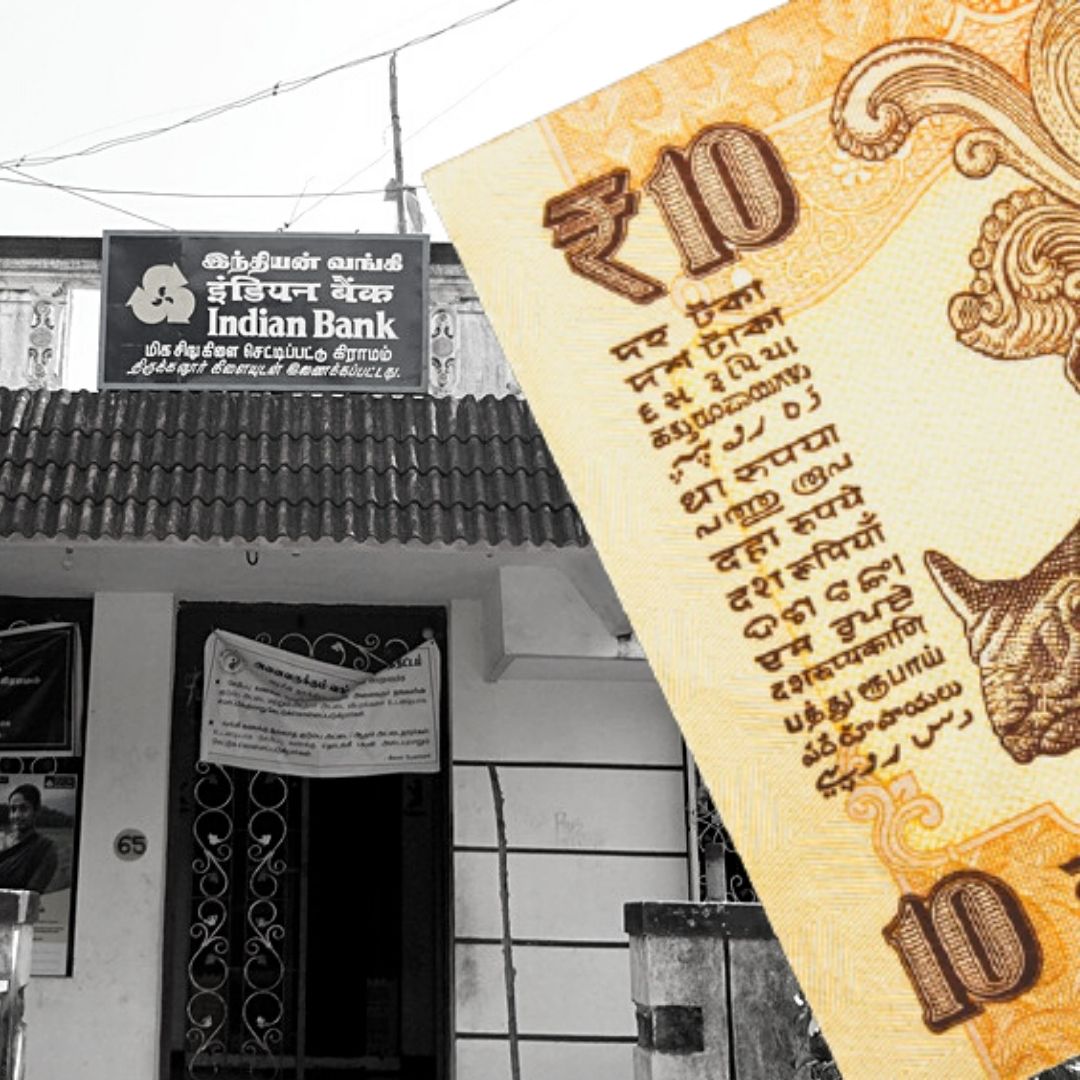Privatising Public Banks: Why Is It An Unsafe Bet By The Government?
India, 12 Dec 2021 7:55 AM GMT | Updated 12 Dec 2021 5:38 PM GMT
Editor : Ankita Singh |
A literature lover who likes delving deeper into a wide range of societal issues and expresses her opinions about the same. Keeps looking for best-read recommendations while enjoying her coffee and tea.
Creatives : Ratika Rana
Her primary objective is to inform, promote, educate and cultivate readers through writing.
With the merger of 10 public sector banks into four in 2020, there are now 12 public sector banks (PSBs) in India. Niti Aayog has zeroed in on four mid-sized PSBs as part of the privatisation push.
The time of the release of the annual fiscal budget of 2022-23 is coming close, so is the country's massive disinvestment plan for 2022. The Ministry of Finance, headed by Nirmala Sitharaman, is looking forward to bringing in legislative amendments to get two Public Sector Banks (PSBs) out of the Banking Companies (Acquisition and Transfer of Undertakings) Act 1970 and (nationalization) 1980. Before the government finally repealed the two laws, it would bring the designated banks under the Companies Act.
Why Does The Government Want To Privatize The Banks?
The whole idea behind privatizing banks is to remove the policy constraint that mandates the voting rights at 10 per cent voting rights for a non-government shareholder irrespective of shareholding before the government sends out an investment invite for bank privatization. The government now plans for a bare minimum presence in the strategic sector of the Indian economy, which inevitably includes banking amongst the most prominent ones.
The government has entrusted its premium policy think tank, NITI Aayog, to identify Public Sector Undertakings (PSUs) from the strategic sector, which could be merged, privatized, or made subsidiaries of other PSUs. RBI, NITI Aayog, the Finance Ministry and the Department of Economics actively discuss the first phase of privatization in the Rs 1.75 lakh crores disinvestment plan. NITI Aayog has circled four banks for its disinvestment plan, namely, Bank of Maharashtra (BoM), Bank of India (BoI), Indian Overseas Bank (IOB) and the Central Bank of India (CBI).
Moreover, the Punjab National Bank (PNB) fraud further reinforced the calls for the privatization of Indian banks. However, after much debate, heavily reducing the government's influence from influential sectors of the Indian economy might not be the medicine for all the diseases. Government-owned banks have a significant social objective, especially in developed countries. The state-run banks are primarily responsible for providing loans to the most vulnerable section of the Indian society, particularly those who belong to the rural areas. The banks are under strict instructions to provide loans at concessional interest rates to the poor on a priority basis.
India Fraught With Drawbacks
The government's enthusiasm for privatization must not blind it to the failures of private banks and achievements of public banks. India has come way ahead in increasing the number of branches of banks to make the facility more accessible at the grassroots of Indian society. From 1969, when the banks were nationalized, India has progressed from 8,187 banks to more than 1,60,000 banks in the present times. In 1969, the rural reach of the banks stood at a mere 1,443 to more than 52,000 banks as of September 2020. Interestingly, the spread of Public Sector Banks is far more than the reach of private-sector banks in rural areas.
PSBs have a dual nature of objectives, both social and commercial. The social profit for the government-run banks is its expanding reach to previously inaccessible and poorer regions. Such a profit is intangible and improves the economy, employment and standard of living of the people. Only PSBs can think beyond monetary gains and focus on the social development of people. The very need for nationalization arose due to the failure of private sector banks in terms of commercial viability and safeguarding the depositor's money, let alone social profits.
Non-performing assets (NPAs), as seen from the Economic Survey 2020-21, are not exclusively generated in PSBs. The NPAs of private banks up to March 2020 amounted to ₹2,05,848 crore against ₹6,87,317 crore in PSBs. Moreover, an ordinary Indian citizen has always had trust in the government. People find it safe to keep their money in PSBs because they know they have the government to run to even if the bank fails. On the other hand, if a private bank declares itself insolvent, there is nothing much that the customer could do except repent.
The state-run banks are also responsible for managing more than 97 per cent of Jan Dhan accounts under the government. When introduced by the government, such policy measures must always remain the government's responsibility. A majority of Self-Help groups have been associated with public sector banks, thus enabling rural people to become self-sufficient. Now, sudden privatization might become a cause of panic and distrust amongst the most vulnerable sections of society. Most importantly, PSBs have played a significant role in providing credit to the farmers. The farming sector provides the majority of income to the Indian economy. The outstanding agriculture credit was Rs 4,50,207 crore (86.6 per cent in total credit to agriculture) as of March 2020, against the private banks' Rs 72,893 crore (13.94 per cent).
The country has already seen more than 500 private banks falling from 1947 to 1969. Moreover, the government banks have bailed out private banks in several instances. Between 1969 to 2000, nearly 25 private banks merged with public banks, and the most recent example has been YES Bank. While some experts might also argue how privatizing banks is ultimately beneficial for the economy since it increases competition and fastens the procedural work, we cannot ignore the fact that private banks might have loopholes in their governance. For instance, Chanda Kochhar, the former Managing Director and Chief Executive Officer of ICICI Bank, was often charged with issuing dubious loans to her husband.
What Could Be Done?
When a situation arises for the government to stand up and support ailing private banks, the taxpayer's money is being put to use. Therefore, it might be a better alternative for the government to maintain its stance on its holdings. Moreover, with rapid digitalization in the last decade, most official procedures have moved from pen and paper to emails, which reduces time and helps in better maintaining records. Therefore, the need of the hour for Public Sector Banks is to maintain a stricter vigil on its policy measures and place better regulations and control mechanisms.
Also Read: Worrisome! Enrolment In School-Going Population Declines By 3.3 Million In India
 All section
All section















